Custom Engagement Solutions
Unlock tailored solutions with a free, no-obligation strategy session.
Expert Developers & Engineers on Demand
Scale Your Team with Skilled IT Professionals
Expert Guidance for Digital Transformation

According to statistics, eCommerce will become 24.5% of all retail industry by 2025. This entails B2B through to B2C retail sales.
In the eCommerce space, the platform you choose must be adaptive. You should be able to modify things as desired rather than being restricted to a front-end and back-end system that are coupled together.
You should be able to make changes on the customer-facing side of your eCommerce store without impacting the back-end store processes, which handle shopping carts, shipping orders, tax calculations, and many others.
Similarly, you should be able to cater to these back-end processes without affecting the front end where customers interact with your store.
This is where headless commerce platforms come in. Nevertheless, you may need help figuring out where to begin with so many headless commerce platforms.
That’s why we’ve listed 10 of the best headless commerce platforms in this POST, each with unique benefits. You can also use this ROI calculator to find the revenue impact of shifting to headless commerce.
But before we get into the best headless eCommerce platforms, let’s dive into the basics.
A headless e-commerce platform is one where the front and rear of an e-commerce platform are separated. As we’ve said before, what is known as the “front end” of an eCommerce store is the part that faces customers. Such examples include your user interface, product pages, etc.,
The back-end is where all the business logic happens, and it runs every experience the users do not see.
For instance, this includes all the technical aspects of your shop, such as the shopping cart system, order processing, checkout, shipping system, tax calculations, and many more.


Shopify Plus is a very big name in eCommerce. It’s a stable and secure platform with a massive app store. Shopify Plus was the standard for ecommerce for a long time. However, it suddenly became compatible with headless commerce through Shopify Plus, its GraphQL API propelling it into the modern age and still maintaining its status as one of the world’s most relevant and trusted platforms.
When you use headless commerce in Shopify Plus, you can publish to any channel while having complete creative control over different touchpoints and devices.

This is because you can integrate your CRM, PIM, CMS, and ERP systems among others as you may choose to integrate all the different systems that make your business run.
Google Sheets, Slack, Mailchimp, Apple Business Chat and many other major services have Apps for them too. You can also connect with third party marketplaces like Amazon or eBay.
It has an easy-to-use dashboard and content management system that are easily understandable, making it a very stable platform.
Shopify has a neat user interface with neatly organized menu options. It’s good on both ends: The developers’ and the users’ ends.
Shopify is integrated into different systems, such as CRM, PIM, CMS, and ERP. Additionally, it has apps for platforms like Google Sheets, Slack, Mailchimp, Apple Business Chat and more. It even connects to systems like eBay and Amazon.
Its major features are Shopify’s community forums, help center, and telephone and chat support. Besides, there is a full help center featuring many articles.
It is deeply customizable. With Shopify Plus, you can customize themes, products, checkouts, discounts, and payments.


Another familiar eCommerce site is BigCommerce, which supports headless commerce. In this case, the commerce engine can be separated from the customer-facing UI so that multiple stores can run on several channels concurrently from a single point.
BigCommerce boasts of enterprise-class functionality, exceptional performance and a fantastic app-based system. It is utilized by both B2B (Business-to-Business) and B2C (Business-to-Consumers) companies. The program is aimed at businesses who wish to expand their operations in accordance with their own needs.
BigCommerce allows API-driven experiences by integrating WordPress, eBay, Google, Stripe, Adobe Experience Manager, Drupal, Mailchimp, and Amazon. Additionally, there is a BigCommerce WordPress plugin. It makes the software more compatible with the world’s most famous CMS.
Also Read:- Shopify Plus vs. BigCommerce: Choosing the Right eCommerce Platform
BigCommerce does not limit API calls to specific numbers unlike other industry leaders. Moreover, BigCommerce offers a free one-month trial, and its paid plans start at $29.95 monthly.
With big-time sales metrics front and center on the home screen, BigCommerce has its users hooked with an uncluttered user interface. It has a sidebar navigation menu that makes it easy to get around your headless commerce site.
Bigcommerce is supported by WordPress, eBay, Stripe, Google, Drupal, Mailchimp, Amazon and many other integrations. Such a combination of the platforms on BigCommerce for WordPress will allow WordPress to take care of content while e-commerce would be done by BigCommerce.
BigCommerce offers a useful help center with chat support that is available 24/7. BigCommerce has a comprehensive knowledge base filled with help articles and frequently asked questions (FAQs), developer information, community forums, and video tutorials.
Several apps exist that let you customize your BigCommerce store fully. Some of these are:
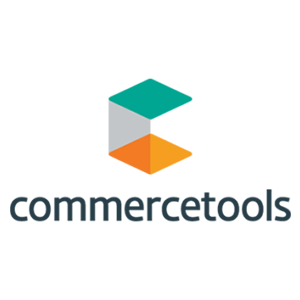
Commercetools offers cloud-based POS functions, and headless commerce tech has also been integrated into the omnichannel platform. It is a favorite choice for both B2C and B2B corporations.
For extensive eCommerce services that can be accessed through numerous touch points, this tool can be used by clients. These are mobile apps, websites, VR applications, and voice assistants. The tool enables this by separating the front from the back end using APIs to meet customer needs.
Moreover, with APIs covering everything, you do not need SQL or other customizations. Besides, there are a variety of inventory control features that will work out well in any store. These include tracking, adjustments, multi-store management, and returns.
Regarding integrations, Commercetools can be easily integrated with Cybersource (for payment management solutions), Contentstack (for content management), and Frontstatic (for front-end development). Also, it is possible to integrate it with front-end CMS systems such as Adobe Experience Cloud.
The pricing of Commercetools doesn’t appear on its website, so one will have to contact the company directly for more details.
Commercetools has a simplistic UI with fewer menu options than other big competitors on the backend. The UI is fairly basic, minimal, and easy to use.
Commercetools can be integrated with Contentstack, Cybersource, and Frontstatic, while front-end CMS systems can be integrated. More integrations are constantly added here. You can check them here.
Commercetools is API configurable. This means that, with the help of these useful utilities, you can have your custom fields, including discount code, shipping method, category, shopping list, or customer group. In this way, you are adding individuality to these elements of your shop and preventing yourself from being wedded to a specific design.
There are minimal ways in which Commercetools can provide for its customers. There is no phone number or live chat available.
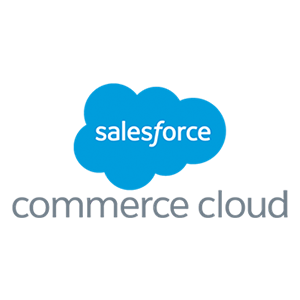
Salesforce Commerce Cloud is a platform for conducting online business. In the B2C space, it used to be called Demandware, and in the B2B space, it was CloudCraze.
Commerce Cloud allows you to get an agile platform with better protection, which can scale with your business. Moreover, there are partner app markets, so you can use many storefronts and augmented reality platforms together.
Of course, being made by a company that deals in CRM systems, your shop will have a seamless connection to your CRM. This enables you to personalize customer interactions by consolidating all of your data.
As such, it could lead to higher revenues across multiple channels. Thus, Salesforce Commerce Cloud employs automation and artificial intelligence to introduce headless commerce to consumers. The Salesforce Commerce Cloud pricing can only be determined upon request.
It is easy to use the Salesforce Commerce Cloud user interface. As opposed to other options, it is a bit busier.
This system integrates flawlessly with Salesforce family products, of which CRM is very popular. In addition, there are also connections to Slack and the rest of the systems, like marketplaces and augmented reality systems.
For instance, Salesforce Commerce Cloud has phone customer support service and live chat. Additionally, their site has a huge resource page that covers various topics such as events, roles, content types, and blog articles, among others.
Your store can be personalized by a partner marketplace with access to various services.
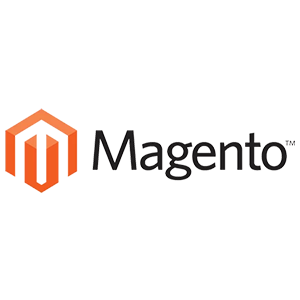
Formerly known as Adobe Commerce, Magento is a flexible headless commerce platform. This service lets web developers create custom applications for their clients. It also contains many sensibly connected multi-channel solutions on the cloud that allow the integration of digital and physical store experiences.
The renowned inventory management system lets you know what is available across all your locations, including shops and warehouses. This inventory is updated live, so you will always have a clear idea of what’s there.
Magento is known for its analytics, which provides enhanced data visualization. The data can be easily sent to your email box, giving you an idea of the retention rate, lifetime value, or average order value for any chosen period.
Also Read:- eCommerce Website vs eCommerce Marketplace: Which is Better?
Magento also permits custom integrations with REST and SOAP web API frameworks. These are only a few examples: CRM, CMS, PIM, ERP, accounting, marketing, and inventory management integrations are possible. Adobe Commerce’s pricing is available upon request.
Magento has a clean user interface with a central dashboard and sidebar menu that allows you to access the service’s core features.
Creating custom integration with Magento is possible using the REST and SOAP web API frameworks. Such integrations can include CRM, PIM, ERP, CMS tools, marketing software platforms, and inventory control solutions.
Adobe Commerce Help Center is equipped with several assistance tools that support and encourage you to do better e-commerce operations in your store. It also contains useful information and other resources such as best practices, diagnostic and monitoring tools, and all the necessary information about your website.
Magento can be highly adjusted but will require advanced experience with the platform and development expertise.

It claims to be a platform-as-a-service solution running on over 900 API modules. Spryker positions itself as a cloud-based enterprise solution that has gained popularity among large companies. You could use this service’s scalability to grow your company without technical limitations.
That’s why big companies such as Toyota, Prym, and Lekkerland all trust it. Spryker builds e-shops from scratch. It even provides you with expert guidance on how to go about this.
Spryker’s headless commerce experience is made possible through its GLUE API. This lets you combine smart devices and large legacy platforms. You can also use IoT touchpoints for recurring eCommerce purchases, making retaining loyal customers easier. Hence, this would increase customer loyalty as well as average order value.
Pricing information is not available to the public by Spryker. There is a demo available via the company website.
The user interface of Spryker is very plain, showing orders and offers on the main page. The side menu does not have too many buttons, which makes it less messy than your usual side menu.
Spryker can be implemented with huge, outdated platforms. For more detailed information, refer to the partner’s page on the Spryker website, which contains all the integrations.
Spryker’s customer service only appears to have a contact form, as no phone or live chat support is available.
Spryker has different partner services that allow its customization. Algolia, for instance, helps set up your store’s search feature, which makes it unique. Additionally, PayPal integration will enable your customers to pay using their accounts. You could choose these options if you want more control over your system and envision a headless commerce platform.

Infosys Equinox is a US-based company involved in headless commerce that combines human-centric commerce with marketing to create hyper-personalized experiences across multiple touchpoints and channels.
The site says it has a 30% faster performance than other e-commerce platforms. It also integrates with messengers, social media sites, voice services, IoT devices, chatbots, and more.
Over 25 technology partners are working with this company globally, including CMS solutions, tax and shipping providers, payment gateways, etc.
They offer B2B, B2C, DTC, or B2B2C models. Pricing details are available upon request, and demos can be scheduled via their website.
Also Read:- Top 11 Best eCommerce Website Builder that Build Perfect Store
The user interface of this service that faces the customer is neat and simple. One can adjust it to suit individual tastes. The backend is open to use, has no complicated jargon, and provides customized reports at the click of a button.
Infosys has incorporated messenger services, voice platforms, social media sites, chatbots, VR and AR, IoT devices, and wearable technologies.
There is no phone number or live chat support. Infosys uses a contact form for outreach.
You will find articles, ebooks, videos, and crucial staff members’ information on this site.
Infosys Equinox permits personalization across multiple channels and touchpoints. It talks about exceptional experiences as “hyper-personalized.””

Swell is a US-based headless commerce platform specializing in customer experiences and unique business models. Swell’s objective was to develop a user-friendly headless commerce solution that anyone can operate regardless of their technical literacy. It supports B2C and B2B business models.
Swell employs an API-first approach to back-end management, speeding up businesses’ ability to integrate with modern development tools for future-proofing. Smaller enterprises, middle-sized ones, and large organizations can use this platform.
Its simplicity makes Swell one of the easiest-to-use platforms so that you can handle all operations through a central intuitive dashboard. An interface that is simple enough for rookies but whose components can also be customized in any way experts desire.
Users can manage product options, including differences in size and color, with just a click. This makes it a more streamlined experience, as product option updates do not require plugins or coding. Users can utilize Swell’s APIs to create custom checkout flows and thus design the shopping experiences of their dreams for customers.
Stripe, PayPal, Braintree, Zapier, Slack, Mailchimp, Algolia, and ShipStation are some services you can integrate. Swell has a limited free version. Paid plans start at $299 monthly, while the enterprise plan goes for $2,000 monthly.
With Swell, you have an uncluttered user interface that is easy to use and comprehend. It has a side menu that doesn’t overburden you with too many choices.
It can integrate Stripe, Braintree, PayPal, Zapier, Mailchimp, Slack Algolia, and ShipStation, among other quality services.
There is only a Help Center in Swell.
The Help Center has FAQs, Articles, and a Search Box. There is also a Resources Page and a Community Forum.
Using Swell, you can build an entirely customizable checkout flow.
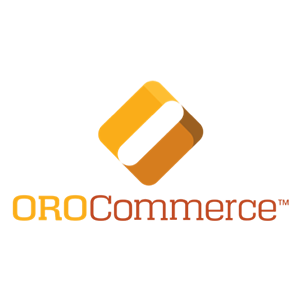
OroCommerce is a headless commerce platform that’s popular with wholesalers. This means it was built by the same executives who made Magento, so you know you’re in good hands.
Specifically designed for the B2B industry, OroCommerce offers advanced customization options for B2C, B2B2C, and B2B2B models. Thanks to this platform offering inventory management solutions, you can manage multiple websites and warehouses while managing your product catalogs and adjusting prices at will. It is deployable both on-premise and in the cloud.
Also, this item is equipped with a built-in CRM to assist in sales pipelines, customer segmentation, marketing, sales forecasts, and more across your entire enterprise. If you already have a CRM, it will work with many software applications: Customer Relationship Management and Enterprise Resource Planning.
For instance, OroCommerce allows you to choose between headless commerce and traditional eCommerce platforms, thus enabling you to have the desired store. The company adopts an open-source approach by building a developer community around the product. This enables code transparency, enhanced product security, and reliability. OroCommerce’s pricing is available upon request.
The user interface of OroCommerce looks simple and neat. This has a side menu from where users can find ten different choices.
OroCommerce connects with CRMs, ERPs, PIMs, and payment systems.
OroCommerce offers customer service via a ticketing system from Monday through Friday.
This service has a learning center that includes articles, whitepapers, podcasts, etc.
You can create a fully customizable ecommerce website with OroCommerce.
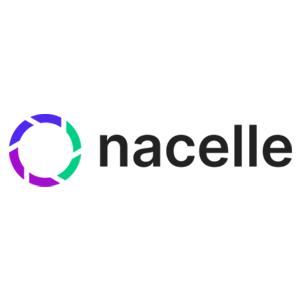
The headless commerce platform, Nacelle, facilitates the creation of headless architecture and works with the existing tech stack. This means that there is no need for any migration.
This is done by the system gathering data from your system and combining it with your content and stores in a way that is just absolutely perfect for headless development.
The whole thing is re-indexed again to make the data more robust. You can also get data from other platforms such as SalesForce, Netsuite, Magento, Shopify, etc.
This also extends to other CMS, PIM, and OMS systems. It can also pull data out of custom-built platforms.
Nacelle’s documented SDK and React/Vue starter kits keep this stream alive using GraphQL API, which is primarily optimized for progressive web app builds.
They also have integrations with Sanity and Contentful, meaning you could use their templates to get a PWA app in less than five minutes. However, they do not limit you only to these integrations; their developers may integrate it with any CMS they wish.
Nacelle is highly user-friendly and can be integrated into a pre-existing tech stack.
Nacelle supports every CMS and comes with built-in integrations for Contentful and Sanity.
Nacelle’s website’s customer support resources are comprised of a help center with FAQs. There is also a contact page, which contains a contact form.
Nacelle has blog posts, written articles, webinars, and FAQs on its resources webpage.
Nacelle can be adjusted to fit into an extant tech stack.
A headless eCommerce platform is a web store that separates the public-facing front end from the technical back end. In other words, you can change any of these parts without affecting others.
Yes, Shopify has a headless structure. You can choose how your store’s front end looks using third-party apps and, at the same time, customize your checkout flow and shopping cart system through Storefront API.
Magento’s architecture has been built around commerce since its version 2.3 inception, allowing you to use it as an API with GraphQL. Before version 2.3, you could also do headless e-commerce within Magento, albeit not out-of-box, using customizing APIs.
We spent a lot of time highlighting 10 of the best headless eCommerce platforms in the world. The solutions we’ve covered today offer tremendous value, eCommerce functionality, and optimization opportunities that can help you design the ultimate eCommerce digital experience.
Whether you are looking for B2C or B2B eCommerce, there’s a headless commerce solution that will meet your business needs.
If you want to bring headless commerce solutions to the world of subscription-based revenue, contact CartCoders today for a demo.
Projects delivered in 15+ industries.
95% retention rate, building lasting partnerships.
Serving clients across 25+ countries.
60+ pros | 10+ years of experience.